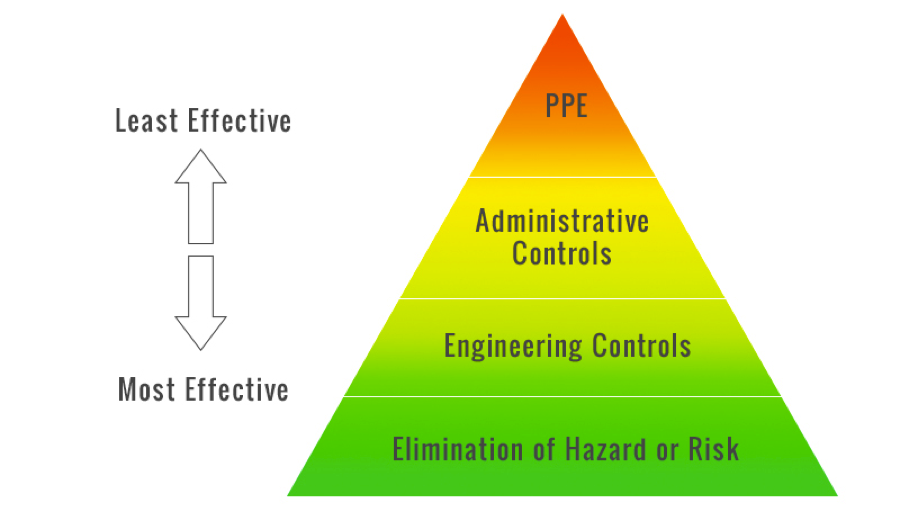In the real world, every single element of risk cannot be eliminated from a job. But decreasing levels of risk wherever possible is necessary to both ensure worker safety and to enhance the quality of job being performed. No employee can be expected, nor should they be, to perform a job without the knowledge that every possible measure is being taken to guarantee their safety.
In this graphic we look at various methods for managing on-site safety and their varying degrees of effectiveness. Like all models, this one represents a hypothetical where the opposing extremes would be impossible to replicate in a real-world situation. In reality, a combination of these approaches would be used to ensure that maximum worker safety is achieved, wherever possible, at each level.
At each level, we’ll take the example of a bridge painting job and examine what factors that can be controlled for at every layer of protection.

Elimination of the hazard or risk
In the case of a bridge painting job, fully eliminating the hazard or risk might entail bringing the bridge to ground level. A bridge over a river would require the bridge be brought to ground level and the river completely covered over. This would be an expensive proposal for a contractor to make, not to mention a feat of engineering, and likely wouldn’t fit into the scope of work.
As you may have guessed, the total elimination of many on-site hazards simply isn’t feasible. While some hazards, such as slippery surfaces, could in practice be completely eliminated, others must be addressed further up our pyramid.
Engineering controls
These measures are modifications of on-site conditions for the purpose of achieving a safer workspace. On our hypothetical bridge job, examples of engineering controls could include the installation of safe and effective temporary safety platforms beneath the bridge, like the ones manufactured by our friends at Safespan. Creating a large, stable platform reduces the risk of a fall.
Since our bridge is over water, another engineered control would be the presence of a safety boat whenever crews are at work on the bridge. Both of these are examples of safety measures we can “install” in an environment to control for inherent risks.
Administrative controls
Here’s where it helps to have comprehensive safety documentation in place. Documented safety procedures should go beyond the minimum required by regulatory agencies. Since it is impossible to eliminate all the hazards that may exist on a work site, it’s imperative that employees are made aware of potential risks and have standards in place for dealing with them.
The procedures contained within should be designed by experienced safety professionals and taught, circulated and enforced throughout the workforce.
Personal Protective Equipment
Personal protective equipment (PPE) is the worker’s last line of defense against injury. Multiple, more proactive steps should be taken before relying on PPE to protect crews. By no means does this mean that PPE is unimportant.
Fall protection is the most obvious requirement on our hypothetical bridge project. But, depending on the work being done, certain respiration, material handling, dust collection or decontamination equipment may be necessary.
PPE is an investment in the workforce and by extension the quality of the work being performed. As such, all-possible measures should be taken to ensure that the equipment is up-to-date and in good working order.
Once safety concerns are addressed at every level of the pyramid, we can begin to expect quality work. In the following posts, we’ll continue to look at other issues that can negatively affect the quality of a job.


